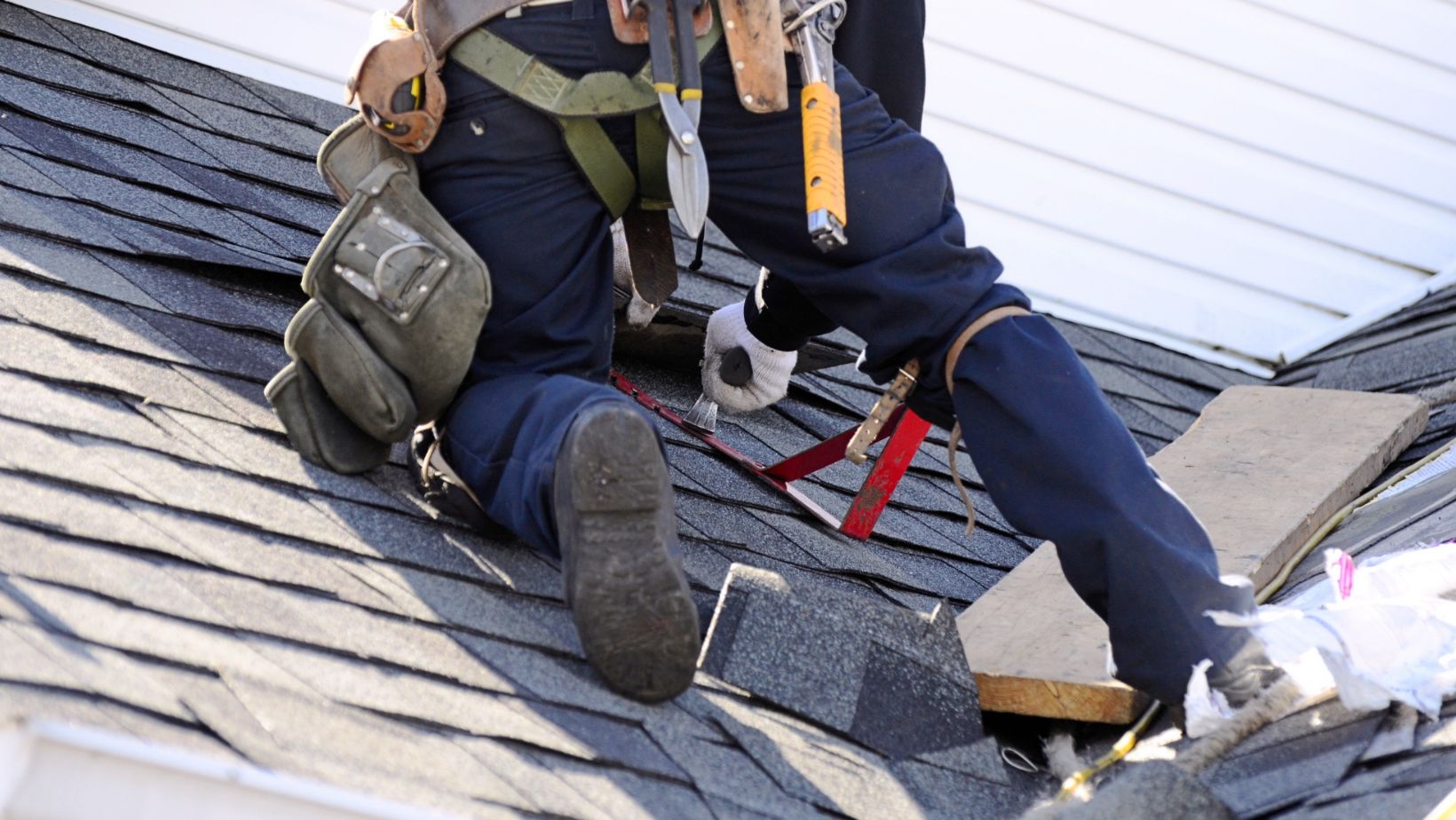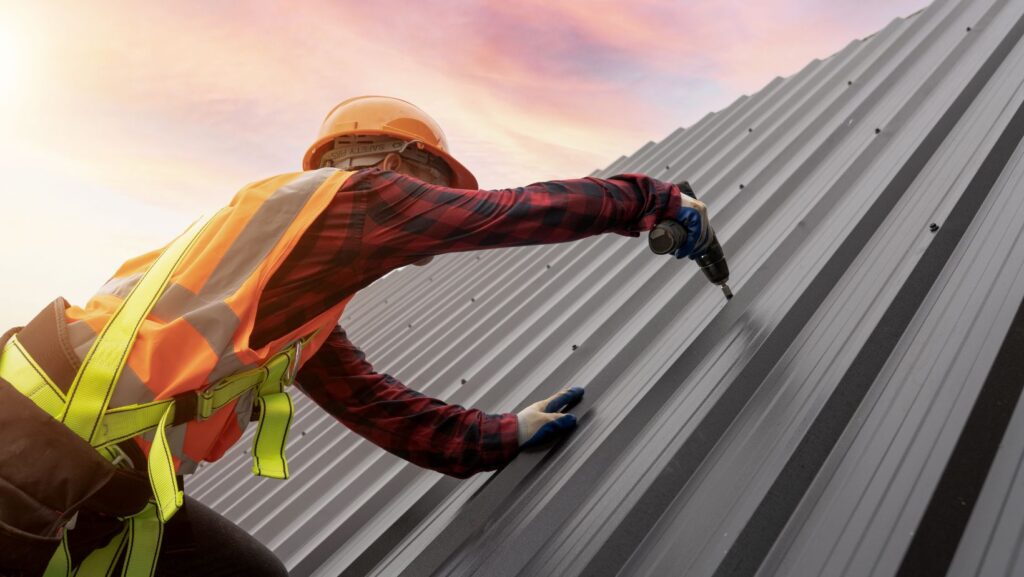When planning a roof replacement, one of the key choices homeowners must make is between architectural shingles and 3-tab shingles. While both primarily protect your home from the elements, they differ in appearance, durability, cost, and longevity. Understanding the differences between these standard asphalt shingle options can help you decide what fits your aesthetic goals and your long-term maintenance plans. Since the roof is a major part of your home’s exterior presentation, choosing the right style directly impacts visual appeal and performance over time.
Contents
Table of Contents
ToggleAesthetic appeal and structural differences
Design, Appearance, and Visual Impact
Architectural shingles are thicker and more dimensional than 3-tab shingles, giving the roof a layered, textured appearance that mimics wood shake or slate. These shingles come in a wide range of colors and often feature varying shapes and tones within the same bundle, enhancing the roofline’s visual depth. 3-tab shingles, on the other hand, have a flat, uniform design with cutouts that form a repetitive pattern. This simplicity creates a clean, straightforward look but lacks the variation and richness that architectural shingles offer. For homeowners seeking a more upscale or customized look, the dimensional quality of architectural shingles provides a dramatic upgrade. Contractors like C&R Roofing near Dallas often install architectural shingles on newer or custom-built homes where curb appeal is a priority, as the aesthetic aligns more naturally with contemporary architectural trends. The enhanced texture adds charm and can increase resale value by giving the home a more polished and modern look.
Durability and Performance in Varying Conditions
One of the primary distinctions between these two shingles types is their durability. Architectural shingles are constructed with multiple layers of asphalt and fiberglass, making them more resistant to wind, rain, and physical impact. Their heavier weight and laminated design allow them to withstand stronger gusts, often up to 110–130 mph when properly installed. In contrast, 3-tab shingles are lighter and thinner, which makes them more susceptible to wind uplift and wear over time.

In areas prone to storms or high winds, the increased strength of architectural shingles becomes a practical consideration. Their layered composition gives them a better chance of holding up under heavy rain and hail. Over time, this translates to fewer repairs and a longer roof life. While 3-tab shingles still meet basic building code requirements and offer weather protection, they typically have a shorter lifespan and may require more frequent maintenance, especially in more extreme climates.
Cost Comparison and Return on Investment
Cost is often the first factor homeowners consider, and 3-tab shingles are usually the more affordable option upfront. Their uniform size and lightweight design make them easier and quicker to install, which reduces labor expenses as well. This makes them an attractive choice for budget-conscious projects or properties where a short-term solution is acceptable. Though more expensive initially, architectural shingles provide added value through their durability, aesthetic appeal, and longer lifespan. They can last 25 to 30 years, while 3-tab shingles generally last 15 to 20 years with proper care. Over time, the need for fewer repairs and replacements may make the architectural option more economical. Additionally, the increased curb appeal from architectural shingles can enhance property value, offering a return when it comes time to sell. Homeowners must weigh whether the lower upfront cost of 3-tab shingles is worth the tradeoff in longevity and performance.
Installation, Maintenance, and Roof Longevity
Both architectural and 3-tab shingles are installed using similar techniques, but the process differs slightly due to the design and weight of each type. Architectural shingles are heavier and require a bit more handling during installation. However, their layered construction often means fewer shingles are needed to cover the same area, which can balance labor times. 3-tab shingles are lighter and easier to align, which simplifies installation but can also make them more prone to inconsistencies if not handled carefully. Maintenance varies between the two as well. Architectural shingles are better at hiding imperfections and can mask issues like uneven decking or minor water staining over time. Their durability also reduces the chances of curling, cracking, or premature granule loss. With 3-tab shingles, regular inspections may be necessary to check for lifted edges or damage after storms. Choosing architectural shingles can lead to a longer-lasting roof that requires less upkeep in the long run.
Choosing Based on Your Home’s Style and Goal
Ultimately, selecting between architectural and 3-tab shingles depends on your home’s architectural style, budget, and property plans. Architectural shingles can enhance those shapes with texture and depth if your home features strong design elements like dormers, gables, or unique rooflines. For rental properties, sheds, or budget-limited renovations, 3-tab shingles may offer a practical solution that meets basic protection needs. It’s also worth considering how long you plan to stay in the home. A homeowner who intends to sell in a few years may prioritize curb appeal and opt for architectural shingles to attract potential buyers. Conversely, someone staying long-term might weigh the cost savings of architectural shingles over time. Whether you want your roof to blend in or stand out, choosing between these two shingle types can shape how your home is perceived and performs for years to come.

Deciding between architectural and 3-tab shingles involves more than comparing prices—evaluating performance, design, and value over time. Architectural shingles offer enhanced durability, dimensional appearance, and longer life, making them suitable for homeowners seeking visual and practical benefits. On the other hand, 3-tab shingles provide a more straightforward, more affordable solution that still delivers basic protection for less. By understanding how these materials differ in construction, maintenance, and aesthetics, you can choose the roofing option that aligns with your home’s style and long-term goals. A roof is an investment, and the right choice contributes to peace of mind and visual harmony for years ahead.

